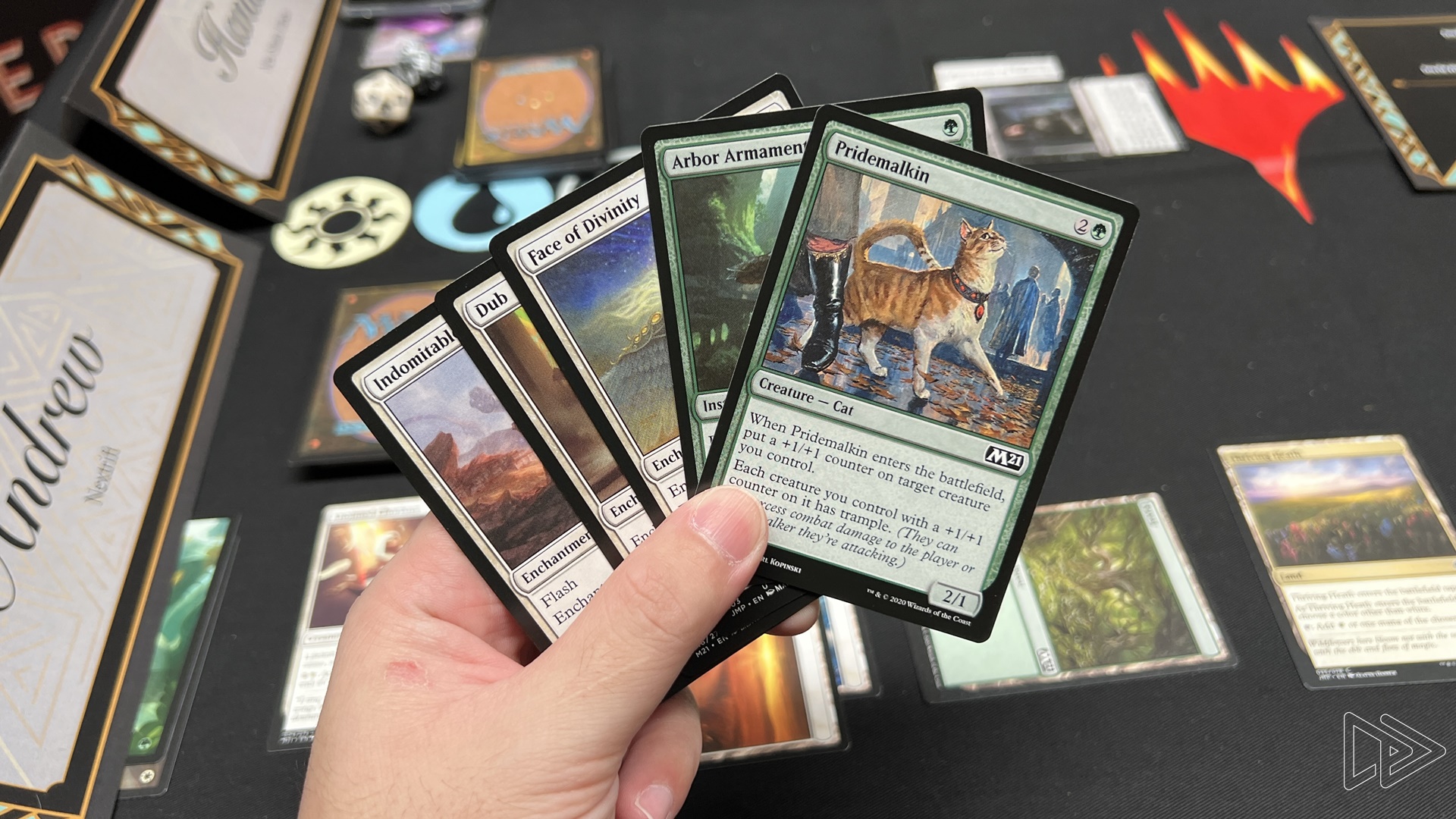Magic: The Gathering’s Streets of New Capenna set is arriving next week on 29 April. Ahead of the set’s launch, Wizards of the Coast held a play session to get members of the media familiarised with the trading card game.
Now, the last time I played Magic was back in 2013 when the first Theros set was released. Needless to say, my knowledge of the card game is a little…rusty. But after a quick refresher, it’s surprisingly easy to get back into the game. This holds true even if you’re a newcomer.
If you’ve always wanted to try out Magic, go for it; it’s really not that difficult to grasp the mechanics of the card game. Of course, with the right community and group of friends, Magic is certainly a fun card game regardless of your skill level.

At the start of the media play session for Magic: The Gathering, we were given two Jumpstart booster packs; a set that was released back in 2020. Each pack contains 20 Magic cards (including lands), and with two packs shuffled together, we have a playable 40-card deck!
While cards featured in the Jumpstart set are not Standard-legal – they are only legal in Eternal formats – this is still a great way for new players to get familiarised with how a game of Magic is played.
Personally, I would’ve preferred a sealed format instead (or even drafting) with the new Streets of Capenna set, but it can be tough for newcomers to immediately build a deck from scratch in this format.

Anyway, once we’ve got our decks ready and shuffled thoroughly, we were paired with another member of the media to start a match. Speaking of shuffling, always have card sleeves ready if you’re planning to play Magic by cracking open new packs.
Not only is it much, much easier to shuffle sleeved cards, the sleeves also protect the Magic cards. Given that some of the cards can cost quite a bit of money – especially if you pull a mythic rare card – it’s good practice to keep the cards as pristine as possible to retain their value.
Unfortunately, we didn’t have card sleeves during our play session. Thankfully (and unfortunately), I didn’t pull any high value card from my two packs, so I didn’t feel too bad about playing them without sleeves on. Oh, a playmat or a nice deskmat would be great too to further protect your cards.

Now that we have an opponent, we flip a coin (or any mutually agreeable method) to decide a winner, who gets to decide to start first or second. Once that’s done, each player draws seven cards from their deck. Don’t like your opening hand? Well, you can take a “mulligan” by shuffling the cards back to your deck, and draw seven new cards.
However, each time you take a mulligan, you’ll have to put a card you’ve drawn equal to the amount of mulligans you’ve taken to the bottom of your deck. Basically, you’ll have six cards after your first mulligan, five after your second mulligan, and so on…until you have zero card.
Needless to say, you’d want to avoid doing that. Having less cards is not a great situation to be in – generally, anyway.

When both players have decided not to take a mulligan, the game begins! The starting player will first put a land on the battlefield (only one land can be put down every turn), and if the player has no creature or spell to cast to whittle down the health of the opposing player, the turn is passed to the opponent.
Since the second starting player will be “behind the curve,” so to speak, they are allowed to draw a card when taking their first turn. Essentially, players who go second will start the game with eight cards in hand; this card advantage can be advantageous with certain decks.
To simplify things, this same cycle is repeated until the starting health total of a player (which is 20) goes down to zero – simple, right?

Of course, there are many more intricacies to Magic beyond this admittedly simple breakdown. For example, there are five different mana colours (classes, basically) with their own unique playstyles, many unique keywords with different effects, along with a ton of formats available to players, including Standard, Draft, Sealed, and even Commander.
These many different aspects of Magic: The Gathering are what make it such a popular trading card game, and it’s even more entertaining if you can find the right community. Heading to your nearest game store – you can locate one here – is the easiest way to do so.


You can even experience Magic from the comfort of your own home if you have a group of friends that are interested to pick up the card game. In my experience – even if it has been many years since I’ve played Magic seriously – playing a drafting game with friends is very, very fun.
Plus, you also get to crack open new Magic booster packs in a drafting session. It’s always exciting to see what you can pull out of these packs, especially if you’re drafting with a new set, such as Streets of New Capenna with its amazing illustrations.
To recap, this set will release on 29 April next week. If you want to pre-order Streets of New Capenna, check with your favourite local game store!